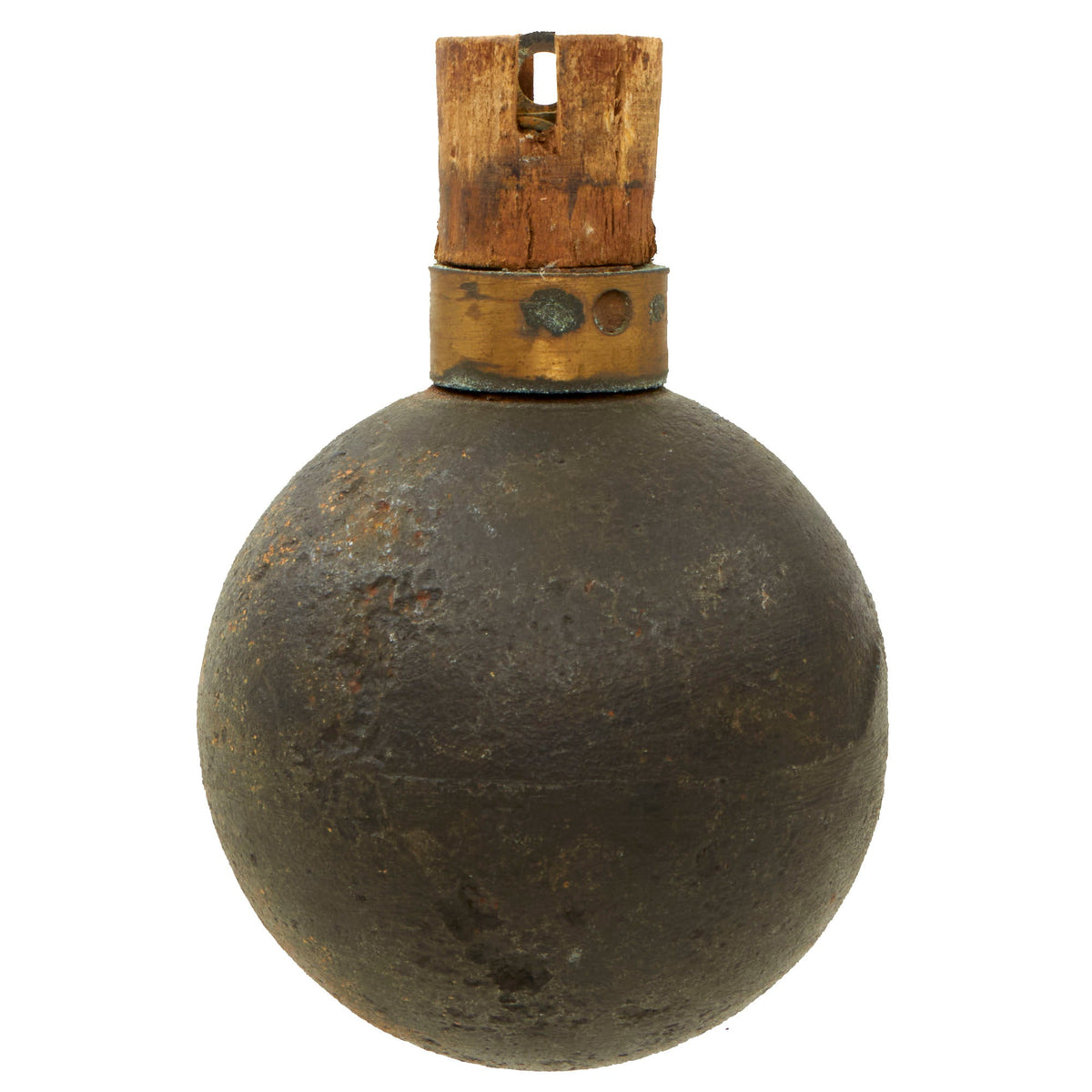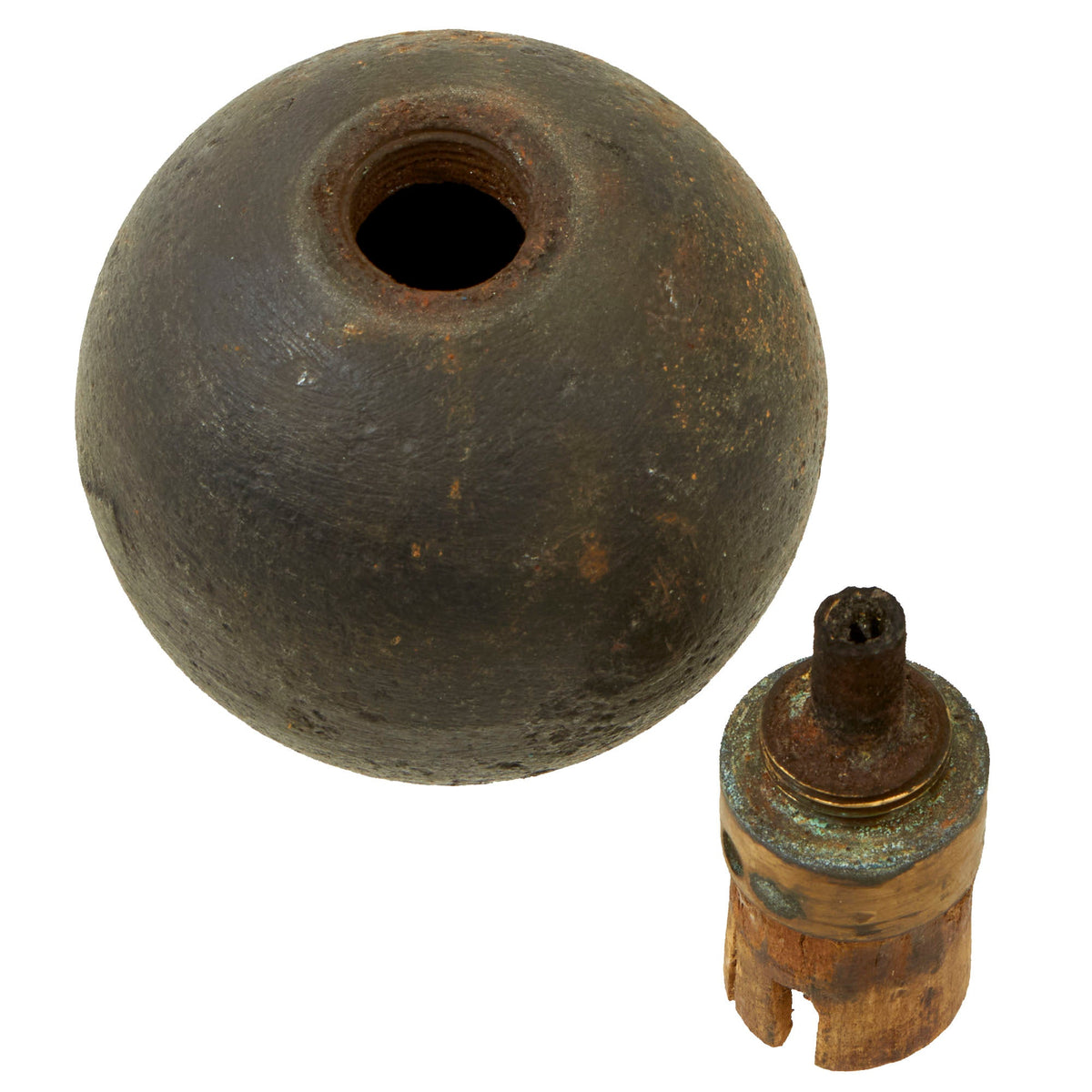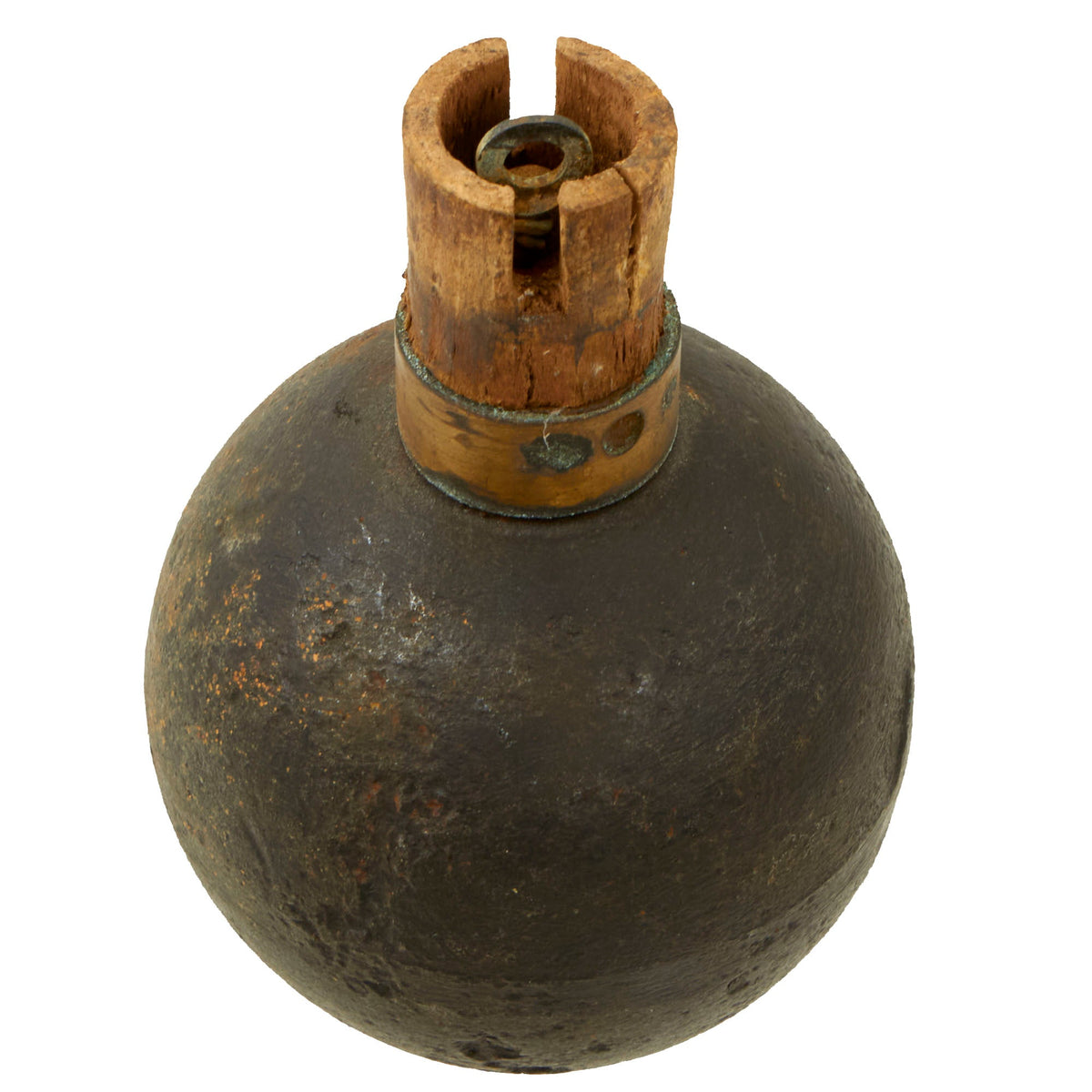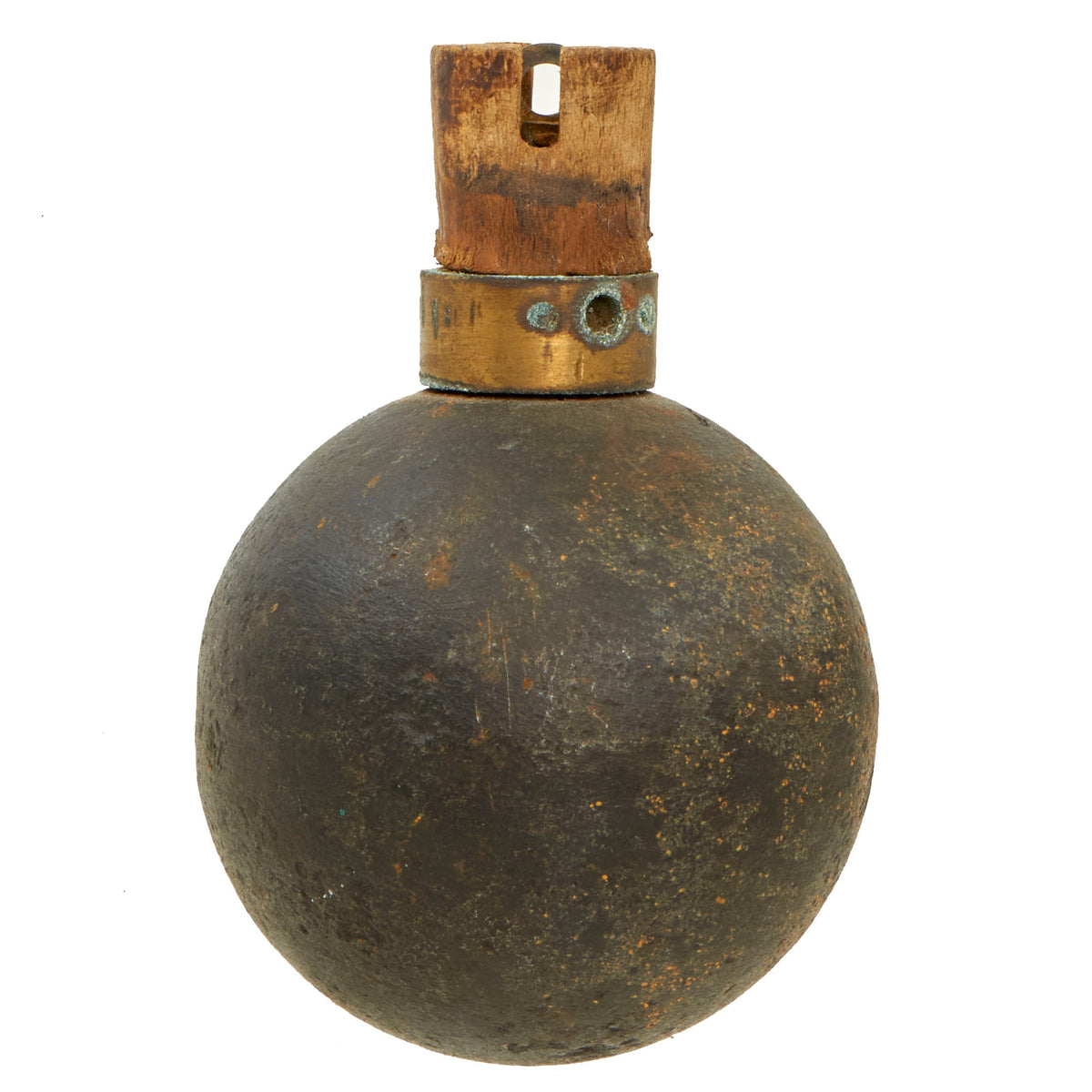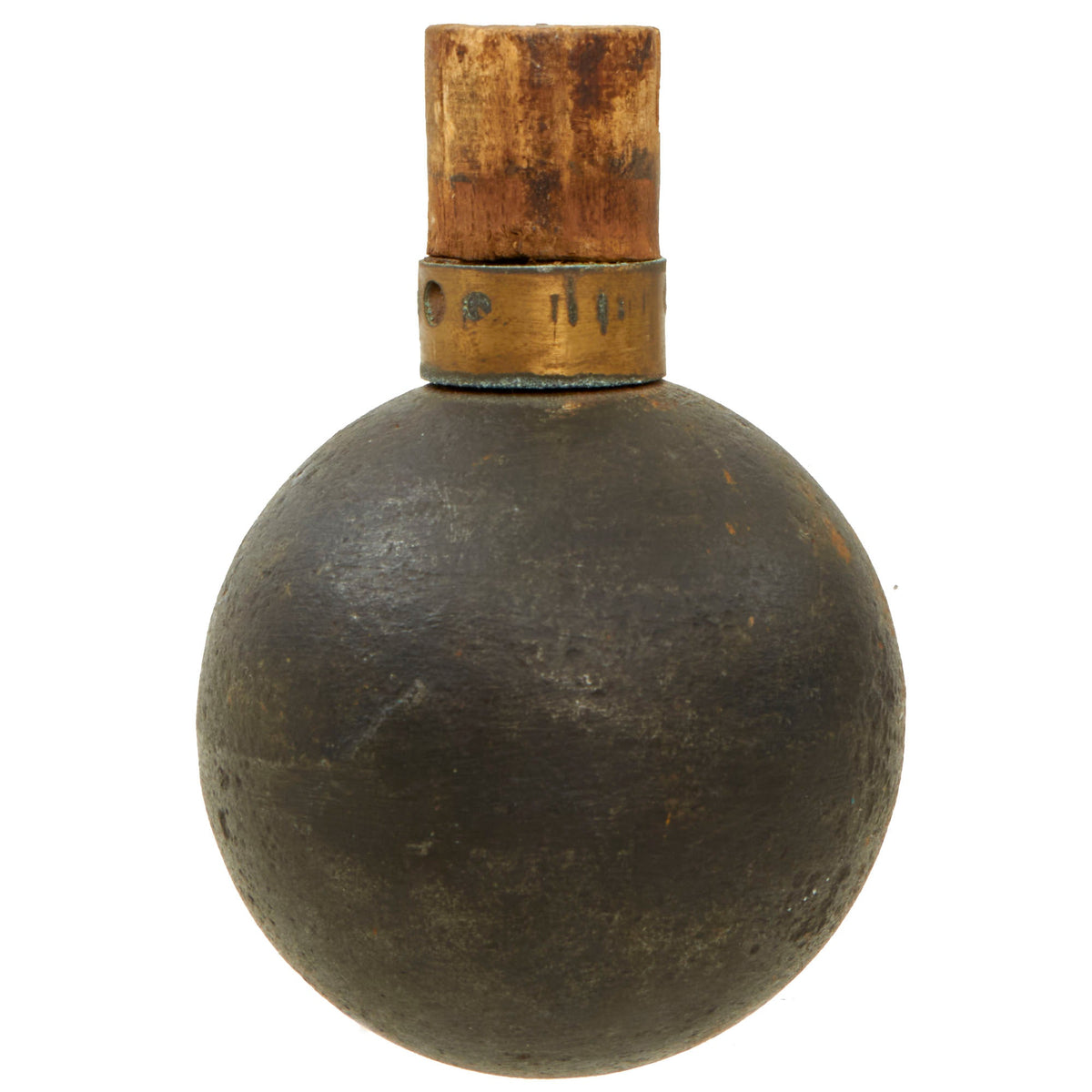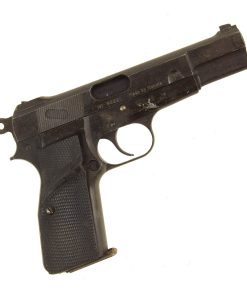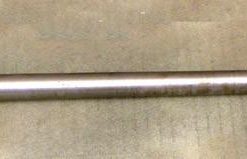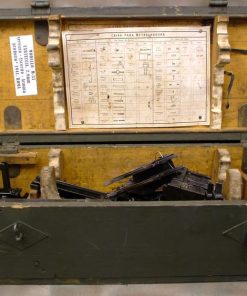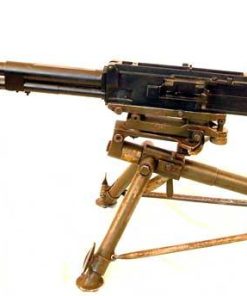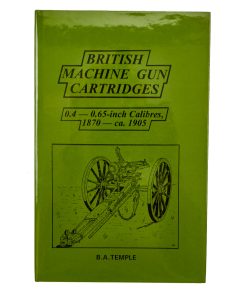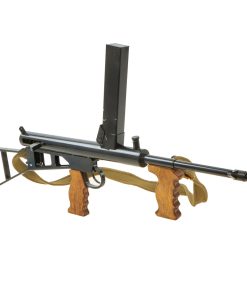Original French WWI Model 1914 Bracelet Ball Hand Grenade with Fuse & Pull Ring Housing – Inert Original Items
$ 495,00 $ 148,50
Original Item: Only One Available. This is a totally inert BATF compliant genuine World War One French Model 1914 Ball Hand Grenade, complete with an original deactivated fuse. It even has the wooden housing with a pull ring inside, which is where the wrist bracelet would attach to the pull ring. Finding grenades in this condition and being near complete is a rarity!
This Item Is Not Available For Export
If this grenade looks rather primitive for something used in WWI, that’s because it really is. The design is based on the Model 1847 ball grenade, which remained unchanged for almost 70 years, before being replaced by the model 1914, which had a modern fuse system and other improvements. However the exterior remained virtually unchanged.
Almost as old as the invention of black powder, this grenade design was first patterned in France by Gribeauval in 1777. This model was a 9.5 cm diameter pig iron hollow sphere, drilled with a smooth hole for the insertion of a wood plug with a wick inside (‘fuze’). It was updated several times, with improved fuzes and other minor changes to improve waterproofing. This represented the only official grenade at the disposal of the French soldiers in 1914 : the grenade modèle 1847.
This proved totally inadequate due to the waterproofing and poor fragmentation, so the modèle 1914 was quickly introduced. The non waterproof issue was a problem noticed far before the war, but only the very wet conditions in the 1914 trenches could convince the higher ups that it was time to adopt the solutions that had been designed before. The wood fuze, which sealed poorly and could be destroyed easily by water, was replaced by a cast bronze fuze (fusée modèle 1914). This featured a wood plug drilled with a hole to access to the traction igniter kook, a delay of 4 seconds, which was threaded into the access hole of the spherical body.
A solution to the fragmentation problems was given with pre-fragmentation grooves on the inner surface of the sphere. This was a somewhat questionable solution, as these were not easy to manufacture, nor were they as efficient at fragmentation properties as externally grooved grenades. Most importantly, it provided a rather hard to hold grenade in wet conditions. This was not really a positive thing with such a heavy grenade, and in the best of conditions, a distance of 20m could be achieved.
To help with this, the grenade could be launched with the help of a wrist sling that was not convenient in the narrow spaces available in trenches. The optimism at the start of the war delayed the manufacturing of this new version, so it was not dispatched to the French soldiers before 1915. As with the earlier model 1847, it was ignited via a “bracelet” worn around the wrist of the thrower.
A hard to find French WWI Grenade, ready to display!
Fast Shipping with Professional Packaging
Thanks to our longstanding association with UPS FedEx DHL, and other major international carriers, we are able to provide a range of shipping options. Our warehouse staff is expertly trained and will wrap your products according to our exact and precise specifications. Prior to shipping, your goods will be thoroughly examined and securely secured. We ship to thousands clients each day across multiple countries. This shows how we're dedicated to be the largest retailer on the internet. Warehouses and distribution centres can be located throughout Europe as well as the USA.
Note: Orders with more than one item will be assigned a processing date depending on the item.
Before shipping before shipping, we'll conduct a thorough inspection of the items you have ordered. Today, the majority of orders will be delivered within 48 hours. The delivery time will be between 3-7 days.
Returns
The stock is dynamic and we cannot completely manage it because multiple stakeholders are involved, including our factory and warehouse. So the actual stock may alter at any time. It's possible that you may not receive your order once the order has been made.
Our policy is valid for a period of 30 days. If you don't receive the product within 30 days, we are not able to issue a refund or an exchange.
You can only return an item if it is unused and in the same state as the day you received it. You must have the item in its original packaging.
Related products
Uncategorized
Uncategorized
Uncategorized
Uncategorized
Uncategorized
Uncategorized
Uncategorized
Australian WWII Owen MK1 Machine Carbine SMG Custom Fabricated Replica with Sling Original Items
Uncategorized
Angolan Rebel 1970s era 60mm Inert Display Mortar from Angolan Civil War Original Items
Uncategorized
Uncategorized
Band of Brothers ORIGINAL GERMAN WWII Le. F.H. 18 10.5cm ARTILLERY PIECE Original Items
Uncategorized
Uncategorized
Uncategorized
Uncategorized
Uncategorized
Australian WWII Owen MK1 Machine Carbine SMG Custom Fabricated Replica with Sling Original Items
Uncategorized
